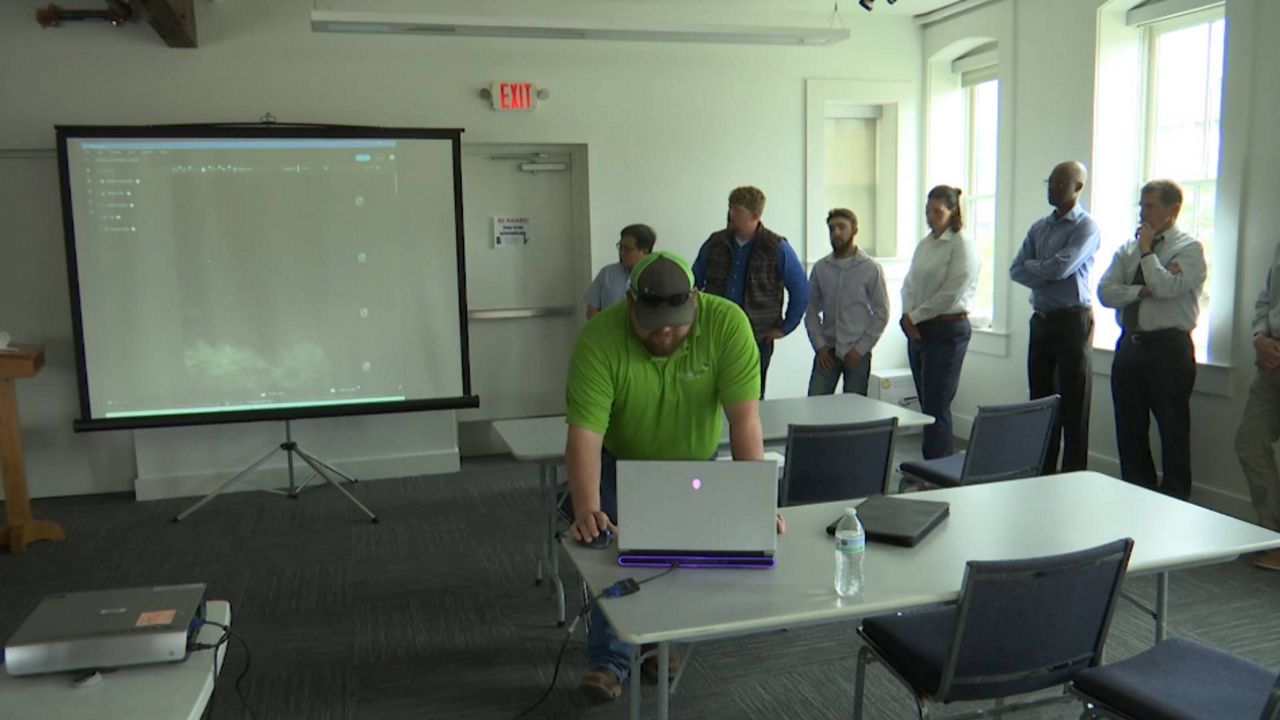COVINGTON, Ky. — A major infrastructure project would have created a lot of unwanted noise for northern Kentucky residents over the next several years, but an engineering innovation is going to keep things quiet. At least, that’s the goal.
People who live near the Brent Spence Bridge Corridor Project said the new sound barriers have been successful so far. While these particular barriers are the first of their kind in the state, Kentuckians could see more of them around the commonwealth soon.
Behind Covington’s Crescent and Western avenues is a nice view, but it hasn’t always been easy on the ears.
Tina Stadtlander, who has lived on Western since 1980, has always tried to make the most of it.
“I try to imagine it as the ocean; the ocean sound is kind of monotonous,” she said. “Except for when the big trucks come over the bridge and make that really loud noise.”
Being right up against the Brent Spence Bridge Corridor Project means the noise is only going to increase over the next several years. As part of its environmental commitment, the Kentucky Transportation Cabinet is installing clear ACRYLITE panel sound walls, the first of their kind in Kentucky.
“Noise pollution is an environmental consideration that has to be taken into account,” said Kevin Rust, project engineer. “And it is important if you live here, because it’s going to be quite a facility when the new structure is built and all the lanes are added and all that.”
In a statement, Stacee Hans, KYTC project manager for the Brent Spence Bridge Corridor Project, said the pilot project addresses the needs of Covington residents who wanted a break from the traffic noise but were concerned the traditional concrete-based noise walls would block views of the Cincinnati skyline, the Ohio River or the Covington-Mainstrasse area.
“Our team listened, and we’re now trying an innovative approach that has been used successfully in coastal states, Europe and more recently been adopted in Ohio and Tennessee,” Hans said. “This pilot project demonstrates how we are trying to be better neighbors in Kentucky communities by taking the knowledge gained from this pilot study and applying it to projects such as the Brent Spence Bridge Corridor Project.”
The pilot project is making a dramatic difference in sound.
“It’s remarkably different,” Rust said. “If you’re on either end, you’re talking loud so you can hear one another. And as you start walking up the sidewalk, your voice just starts dropping because you can almost hear a whisper.”
The problem for some people, however, is the wall is only so long.
“Unfortunately, it begins behind my house,” Stadtlander said. “I still hear the noise. But my neighbors south of me do not hear the noise. I hope one day when the bridge comes, that they add on to the wall and make it go further north.”
Standtlander joked she “might have to move to Florida while the bridge is being built, because I’m going to hear it. You can hear that truck right now.”
More walls are, in fact, a possibility in the future. But for the one that’s there now, Rust has gotten a kick out of seeing the advancement in technology.
“Any time when you’re the first to do something, it’s got a neat feel to it,” he said. “I was here when we widened I-75 in the early ‘90s, so I’ve kind of come full circle. I’m back to work on the same stretch of road that I worked on when I first started with the highway department.”
In the past, noise walls have been mostly made of reinforced concrete and, sometimes, metal. The clear panels are more expensive at $4.2 million for this project, but people in the area didn’t want to lose their view.
“What this allows is for the motorist to be able to see the community and then also for the community to be able to see the views that they’ve always had,” Rust said.
Stadtlander had one burning question many others share about the panels.
“I’m going to see if it gets dirty; who’s going to clean it?” she said.
Rust said there’s a 30-year warranty before the panels lose their clearness, a coating that prevents grime buildup and a graffiti inhibitor on the base.
If the panels are successful, Kentuckians could see them used in other parts of the state, KYTC said. There have already been talks about installing them in Louisville and Lexington.










